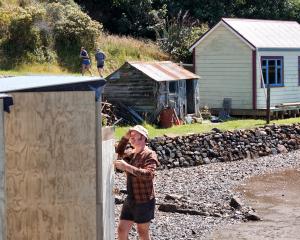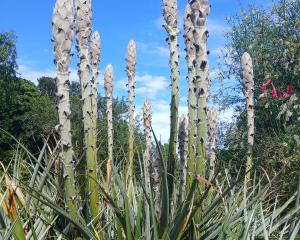This fantastic native is a coastal plant that grows in sand and rocky places throughout New Zealand and while that makes it sound as if it has many natural places to grow, it is actually under threat and considered to be in "serious decline" by the Department of Conservation.
Some of the more serious threats faced by the species in its natural habitat include browsing by stock and possums. Erosion and coastal development also threaten many populations.
Spreading by underground stems, Euphorbia glauca can form large patches of erect stems up to 1m tall.
The stems can be reddish and the foliage is a wonderful blue-green colour which can turn purply-red with age.
The showy red bracts which surround the tiny flowers at the top of the stems persist as the seed pod ripens, making a striking contrast with the leaves at this time of year.
Plant Euphorbia glauca in poor or infertile well-drained soil in the sun. Too rich a soil may cause this herbaceous perennial to become invasive.
Use colourful native species such as sand dune coprosma (Coprosma acerosa) and New Zealand iris (Libertia ixioides) to provide a hot contrast to the cool blue-green of the Euphorbia.
•Common names include shore spurge, waiuatua and sand milkweed. E. glauca has the sometimes irritating milky white sap distinctive to the genus Euphorbia.
•Although a widespread genus, this species occurs naturally only in New Zealand.
•Propagate by fresh seed, divisions or cuttings.
•Go to www.nzpcn.org.nz for more information on threatened native plants.
•Come and see Euphorbia glauca in the coastal garden of the native plant collection in the upper botanic garden or at the Botanic Garden Centre on Lovelock Ave.
Shirley Stuart is curator of the native plant collection at Dunedin Botanic Garden.












